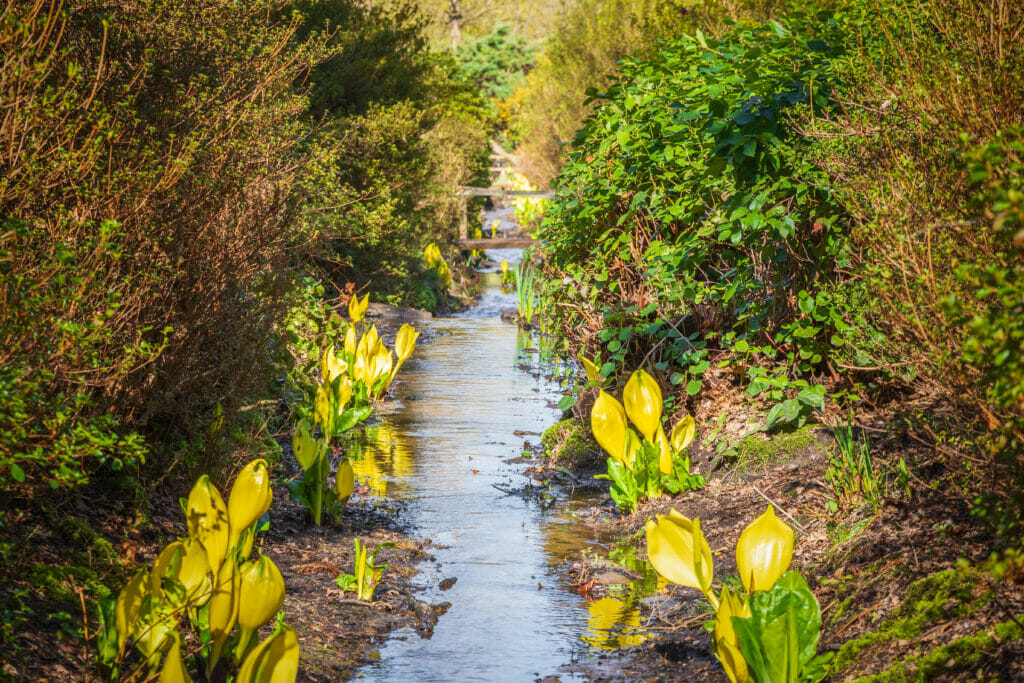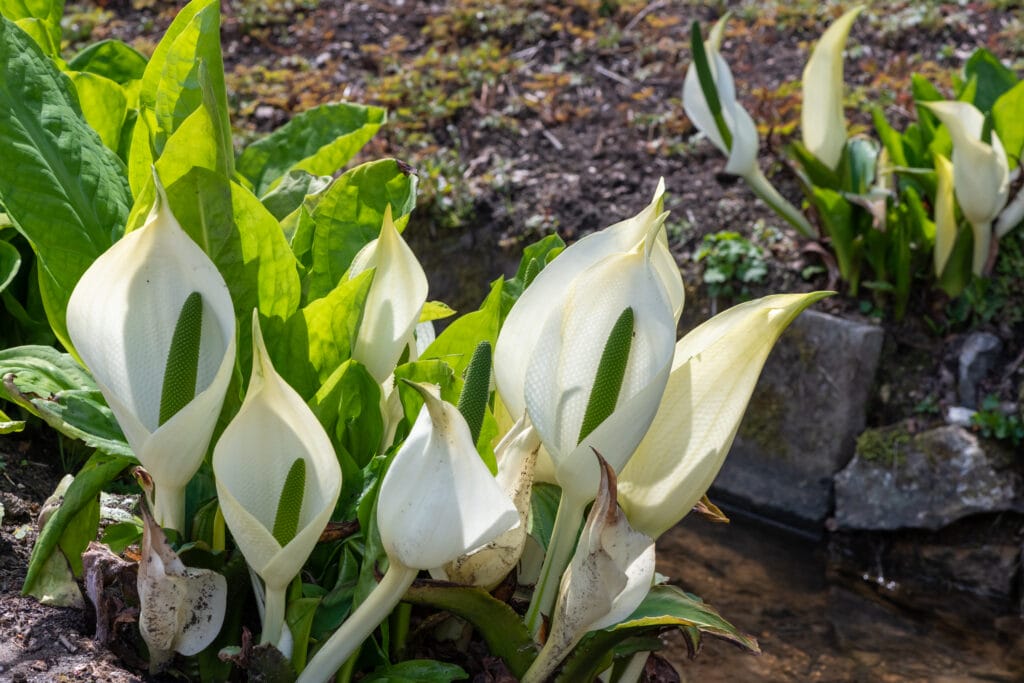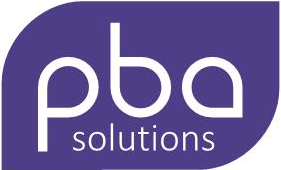You’re unlikely to be alone in not knowing what a Lysichiton americanus is. However, you may be familiar with its distinctive appearance and aroma, and its common name, American skunk cabbage. In the UK you will see this highly invasive species in wet woodland and along waterways, although the plant in its native land grows in bogs and swamps. The plant’s ability to seed and establish deep rhizomes has elevated the questions of how to control and get rid of American skunk cabbage.
What is American skunk cabbage?
As a mature specimen, American skunk cabbage exhibits a bold and sculptural structure, showing off with enormous leaves and a stout flower spike enveloped in a bright yellow shroud. It also likes to announce its presence by exuding a curious, some would say ‘distinctive’ (most would say ‘disgusting’) aroma. The smell can been likened to that of a skunk (its native range is a slice of North America) and hence the name.
Where is this invasive plant found?
It’s found extensively in the western side of the US from the coast to the Rocky Mountains, and from Alaska to California. But America isn’t its only home.
It’s thought that American skunk cabbage arrived in Europe in the early 1900’s, being first mentioned as present in the UK in 1901. By the 1950’s it was common throughout Europe, although not on the scale of say, buddleia or Japanese knotweed. The reason for this is that Lysichiton americanus is rather more of a specialist than the aforementioned. This perennial requires wet ground to thrive. It likes to line the banks of shallow streams and brooks, and take up residence in peat bogs and swampy areas.

American skunk cabbage (swamp lantern) next to a stream flowing through a Plantation (iStock/VictorHuang)
Due to its need for a good water supply, American skunk cabbage historically tended to work its way into planting schemes for large estates and ponds. In most cases, its path into ‘the wild’ is unlikely to have been connected with a home or garden centre. Even nurseries would require a suitable water body or water course to have been successful propagators. However, as has been the case with nearly all other invasive plant species, by the time that anyone really noticed that it was ’out there’, it was too late to easily maintain American skunk cabbage control.
How much of a problem is the American skunk cabbage plant?
It can take some time for American skunk cabbage to get going. However, once it has established itself, it becomes a real problem for other less forceful native plants. Its huge leaves spread out widely, creating shade where light once got through, reducing or removing the chances of survival for many other species. Once it reaches the monoculture stage, the damage really sets in, as the ecology of these locations is forced to change. The whole chain can be impacted, with all kinds of pollinators losing their homes, food sources and livelihoods. Waterways also suffer due to the shading effect, with the worst affected in some cases, almost devoid of life.
Interestingly, pre sale-ban warnings from nursery growers advised that slugs and snails do enjoy a nibble on young Lysichiton americanus leaves. Unfortunately, gastropods are about it for natural predators in the British Isles. The presence of oxalic acid, the same poison that occurs in rhubarb leaves for example, makes the leaves unpalatable to almost all other animals.

Asian or white skunk cabbage (Lysichiton Camtschatcensis) is slow to establish itself (iStock.com/Tom Meaker)
You may well have seen a white version of Skunk Cabbage in a garden centre. Asian skunk cabbage (Lysichiton Camtschatcensis), unlike its relative, sets seed rarely and is much slower to establish itself.
The legal implications presented by American skunk cabbage
Though the plant isn’t listed amongst the invasive plants in Schedule 9 of the UK’s Wildlife and Countryside Act (1981), it is amongst the 36 plants in the EU Regulation on Invasive Alien Species.
Whilst the UK has withdrawn from the EU, a legal instrument has been put in place to ensure that the UK continues with EU law on Invasive Alien Species. The implications of this are that in the UK, sales, planting, or even keeping American skunk cabbage in a garden is banned. If the plant is present on your land, you have a responsibility to take ‘concerted action’ to contain it and prevent its spread.
American skunk cabbage control methods
For the reasons highlighted above, and American skunk cabbage’s ability to spread (particularly down water courses), it is a plant that is best handled by a professional invasive plant company. An organisation of this type should draw up a management plan that considers the various control methods and highlight the one best suited to the client’s needs and budget.
Considerations
The challenge when selecting the best control method relates to the plant’s seed production and a rhizome that can extend 0.7m deep. The key to managing American skunk cabbage is identifying and removing early growth. Seed production starts after 5 years, therefore if the plant can be dealt with before then, a successful outcome should be achieved quicker. However, given the chance to establish itself and produce seeds, the seedbank can remain dormant for up to 6 years.
Control types
Valid control methods include hand-pulling, mechanical or manual excavation and herbicide treatment. However, selection of the most appropriate method should consider its merits and drawbacks. For example, hand-pulling may be appropriate for new growth if all the rhizome is removed, but not for a large stand where excavation may be required.
Working along a riverbank, where the plant often resides, can be hazardous and require special safety measures. In addition, if the treatment programme using a glyphosate based herbicide is used close to water, permission will be needed from the Environment Agency (England and Wales) or SEPA (Scotland). Other regulations may apply if in a Conservation Area, SSSI or similar.
At PBA Solutions, we can help with a wide range of problematic plant species, including dealing with the paperwork required by outside agencies such as Natural England or the Environment Agency. So if you’re not sure how to get rid of American skunk cabbage or another invasive plant species, call 0203 174 2187 or 01202 816134 to talk to one of our consultants today.

